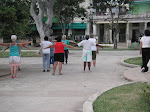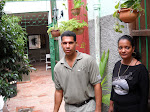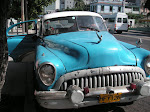Swinging on a Star
Two ten year old boys are pedaling their bikes north from
Mt. Prospect, Illinois in the summer of 1944.
Their moms aren't worried about them as traffic is almost
nonexistent. Today that same road is
clogged with honking cars, growling trucks, and the occasional motorcycle. The warm air cools a little and a sparse
sprinkling begins—ignored by the boys.
The flat prairie land moves slowly by as they approach their
destination—a meandering creek feeds a pond not far off the side of the road. In 1944's pre-television quiet, these boys
have very different ideas from today's kids on how to have fun. For these bikers, creeks and ponds are high
on the list of fun things to do.
Would you like to
swing on a star?
They dismount, wheel their bikes away from the side of the
road, and get out the jars they've brought along for their hunt. They're looking for tadpoles. Call them polliwogs if you will—they're
really the first post-egg form of a developing frog. To catch them, you have to be quiet and
stealthy. Sometimes whole schools of
them can be found near the side of a pond and a swift scooping with strainer
into a large jar can capture a bunch of them at once.
The boys think life is perfect as they hunt. They've heard about terrible things happening
in other parts of the world, but their world—the here and now of 1944 Illinois—is
a picture of peace and enjoyment.
Carry moonbeams home in a jar?
They head home with their jars of squirming, nascent
amphibians. Back down the same long flat
road toward their homes. Their moms
aren't too happy with their new pets with good reasons. How will you feed them? You can't expect them to survive in a jar
with a screw-on lid. It's hard to argue
with a mom on these matters, and she plays on their attachment to the little
swimmers. Soon the kids are convinced
the nicest thing they could do for the tadpoles is to release them in a nearby
pond.
And be better off than
you are?
Dejected, they start toward a pond a few blocks away. They had hoped to keep them long enough to
see the little frog legs grow out from the bodies right by their stringy
tails. Not this time—not this bunch of
tadpoles. One of the boys said,
"Mom's right, we can't keep them," and as the jar's contents splashed
into the pond, the tadpoles happily swam away, refreshed, free, restored to
their element.
So you see, it's all
up to you
You could be better
than you are
You could be swinging
on a star.
Les Inglis
With thanks to Bing Crosby, Jimmy Van Huesen, Johnny Burke, and a kid I used to know




































































































